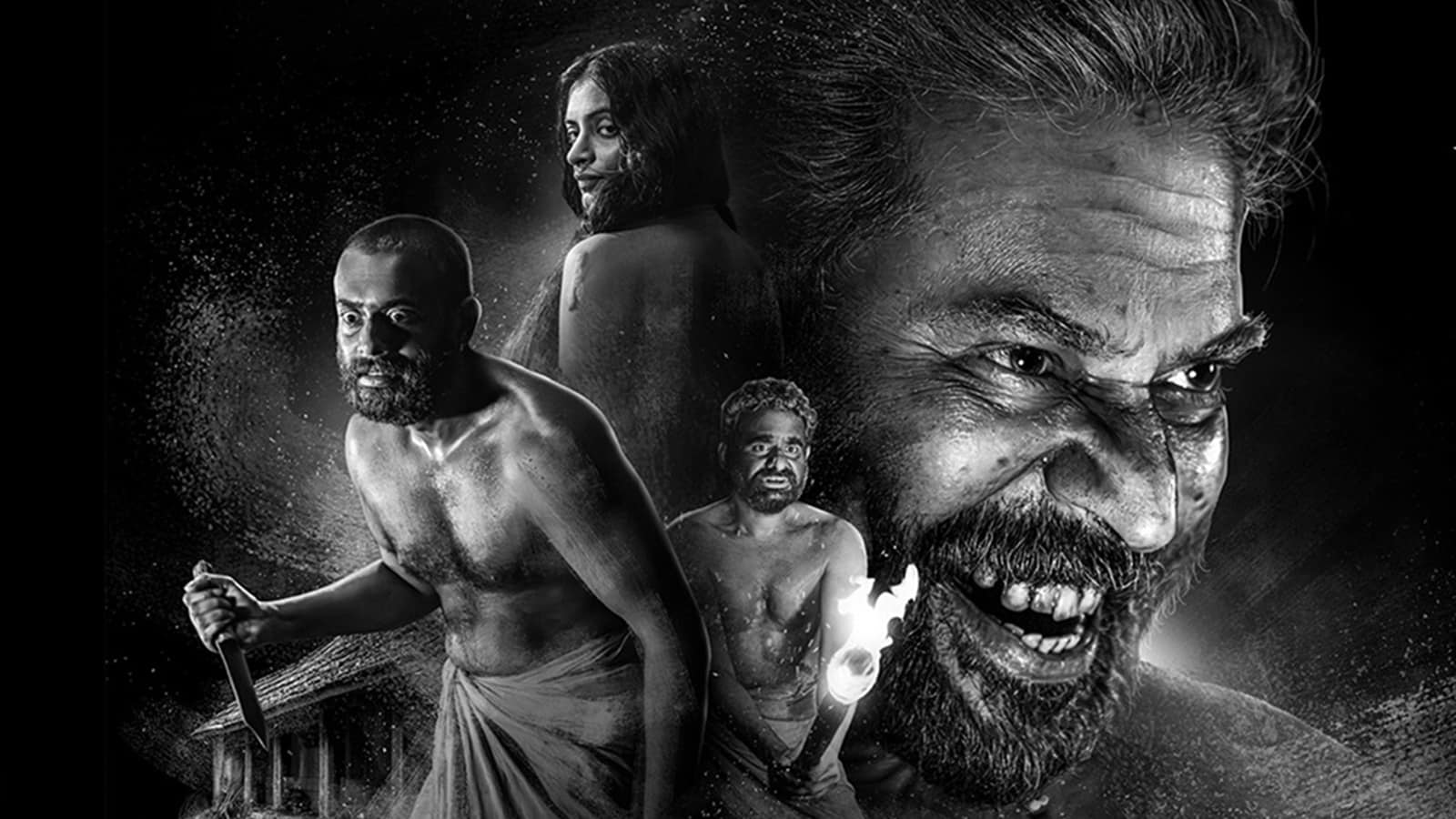“In a world ordered by sexual imbalance, pleasure in looking has been split between active/male and passive/female. The determining male gaze projects its fantasy onto the female figure, which is styled accordingly.”(Mulvey 116) This is simply a method of ‘regulation by patriarchy’ (Geetha 21) to suppress and confine females as a commodity or objects rather than as subjects. Thus, she becomes the type — of sexually exciting beauty to look at or the ugly, unwanted, nagging or so-called dumb woman.
This is not the case with the hero; in keeping up with the male ideology and psychic structures, he cannot be subjected to sexual objectification. (118) He becomes the one whose actions head the story forward, and controls the representative power as well as the film fantasy. His male power is precipitated both ways, by means of his powerful look and also by his way of controlling the events in the story. (119)
Any culture’s art reflects its values, and when one scrutinises the certain trends in sci-fi films with AI-controlled female bots, it sheds light on how females are viewed. Moreover, the internal division or discrimination based on racial-gender aspects can also be learned from such analysis. AI movie Ex Machina (2014), directed by Alex Garland, where Kyoto and Eva subordinate the screen to Nathan, are also clearly etched in the same style, though the main roles are for the females.
“In a world ordered by sexual imbalance, pleasure in looking has been split between active/male and passive/female. The determining male gaze projects its fantasy onto the female figure, which is styled accordingly.”(Mulvey 116) This is simply a method of ‘regulation by patriarchy’ (Geetha 21) to suppress and confine females as a commodity or objects rather than as subjects. Thus, she becomes the type — of sexually exciting beauty to look at or the ugly, unwanted, nagging or so-called dumb woman.
“Throughout all media, especially in films, Asian women are continuously depicted as fetishised, monstrous or both. Female Asian characters are dehumanised to suit the desires of characters and viewers which wish to sexualise or objectify them…” says Trevor Richardson. The on-screen series treatment of Asian women in such films shows a series of violence against people who are not white.
In many ways, it seems a fictional space where this discrimination and exploitation occurs, but still, the violence inflicted upon them seems trivial, aesthetic or serving mainly to advance the plot; especially in Ex Machina, where the white woman’s plot is furthered via an Asian woman’s (Kyoto) struggles. This casual attitude toward violence against Asian women’s bodies very much shows the colonialist views in Robert Stam and Louis Spence’s article, Colonialism, Racism and Representation say (Richardson). This exploitation is due to the power dynamics between European/American histories of Asian non-white oppression.
Gender dynamics in this film deal with objectification and denial of agency hand in hand. Objectification can be defined as the idea of reducing a complex, living individual with agency and individuality to reduce them to an object with which others could use or control (Richardson, Trevor. “Objectification and). The power dynamics of both being the subject and the product (Stacey 8) are also at play in this movie.
For example, the female bots are designed by men according to the male desire of the creator: her colour, body shape, curves, race and even sexuality are modulated. This result in their creation as a subject bound to appear and to feel in the way that the creator wants it to be and, at the same time, as an object to be enjoyed and gazed at; this removes their agency. For instance, in Ex Machina where Nathan views Ava only as part of the continuum, which is to be switched off and her mind downloaded for a better one.
For example, the female bots are designed by men according to the male desire of the creator: her colour, body shape, curves, race and even sexuality are modulated. This result in their creation as a subject bound to appear, and to feel in the way that the creator wants it to be and, at the same time, as an object to be enjoyed and gazed at; this removes their agency. For instance, in Ex Machina where Nathan views Ava only as part of the continuum, which is to be switched off and her mind downloaded for a better one.
Objectification can be seen as an act of Othering. Inverting or perverting that it is the opposite of what is normal and conflicts with the usual norms, and also equally inciting repulsion or hatred. In Powers of Horror: An Essay on Abjection, Julia Kristeva defines the abject as “what disturbs identity, system, order. What does not respect borders, positions, rules” (4). The film portrays the uncanniness of a robot to both desire and abjects it.
For example, Asian females are presented as both desirable and abjectful when the desire is over. At the same time, there is a degree of skin colour movement from dark to light in Nathan’s construction of robots. Consequently, the newest robot or continuum after Ava should be a pure white female.
It is also to be noted that the degree of perfection goes higher with each of these bots, starting with the African AI bot, which is shown as a dummy to the American AI Ava. These Asian and African bots are used as both sexual objects and abjects like Kyoto.
It is also to be noted that the degree of perfection goes higher with each of these bots, starting with the African AI bot, which is shown as a dummy to the American AI Ava. These Asian and African bots are used as both sexual objects and abjects like Kyoto
Kyoto is a robot meant to sexually pleasure him, clean the house, cook and dance to entertain him and finally bear the brunt of his anger every time. Unlike the white Ava, Kyoto is denied the ability to speak, and also, she becomes a stereotype of an Asian servile woman. Though she is well aware of her existence as a robot, she fails to act or escape. She also faces the situation of complete inaction when Caleb asks her, “where is Nathan?” In response, she simply unbuttons her shirt. But Kyoto and Ava emerge from this subjugated stance when both help each other and try to escape. The movie also stereotypes Asian women as sexually vulnerable, especially to white men. This stereotyping of Asian women, like ‘Geisha’, is also discussed in detail by Patricia Park in her The Madame Butterfly Effect: Tracing the History of a Fetish (Richardson).
Objectification of Kyoto is also developed through her self-destruction by peeling off her skin on her own and exposing it to Caleb. Again, her protruding eyes gaze without the eye socket at the audience inflicts extreme forms of objectification. On a deeper note, it can also imply Asian women as sexually high, self-destructive and muted to voice their problems, unlike Ava.
Another racial implication from the movie reads whites as the supreme creation of God (here Nathan) and the creation of blacks, thought to be the first humans, only as an experimental act of God, like Nathan’s. These set the characters at different levels of power in the audience’s eyes, and because Kyoto is the one who is more sexual and more abject, the film continues the negative racial power nexus introduced by colonialism.
Ava, on the other hand, is depicted as a white racial bot; possesses the so-called soft and good manners and better communicative, and persuasive powers. Another difference between them is, that in addition to Ava being depicted as well-behaved she has a higher level of intellect and desires to wear covering clothes on her body as opposed to dumb Kyoto’s half-naked appearance with only average comprehensive ability.
Another racial implication from the movie reads whites as the supreme creation of God (here Nathan) and the creation of blacks, thought to be the first humans, only as an experimental act of God, like Nathan’s. These set the characters at different levels of power in the audience’s eyes, and because Kyoto is the one who is more sexual and more abject, the film continues the negative racial power nexus introduced by colonialism.
At the end, when Kyoto’s jaws are forcibly removed by Nathan’s steel blow, once again, her objectification resurfaces while Ava, on the hand, endures. Kyoto is made immobile from the blow, but Ava, who was rescued by Kyoto from the glass room, escapes. Thus, this scene again shows the sacrificing mentality of Asian women, again a stereotype.
In her paper, Dismembered Asian/American Android Parts in Ex Machina as ‘Inorganic’ Critique, Danielle Wong sees this end as prioritising a white woman’s freedom over an Asian woman (Richardson). She suggests the film equalises freedom with whiteness and a neo-liberal understanding of a race in which Ava wearing an Asian robot’s skin is an act of colour blindness which ignores the sacrifices Asian female robots have made for their freedom.
In her paper, Dismembered Asian/American Android Parts in Ex Machina as ‘Inorganic’ Critique, Danielle Wong sees this end as prioritising a white woman’s freedom over an Asian woman (Richardson). She suggests the film equalises freedom with whiteness and a neo-liberal understanding of a race in which Ava wearing an Asian robot’s skin is an act of colour blindness which ignores the sacrifices Asian female robots have made for their freedom.
The film further sheds light on how are women viewed and likely to be desired from a future perspective. The same weight of expectation as an extension falls on future robotic creations as well. Just like classical Hollywood and the, contemporary Hollywood moulds the imagination of the viewers by normalising the stereotypical notions of the female body and behaviour. Just like Lois Bunner’s American Beauty (1983) traces the signs through which women’s bodies are made to define the expected notions of beauty and womanly ways. (Connell, Raewyn and Rebecca Pearse. Gender: In)
Here, both the racial and gender expectations of the dominant discourse are achieved through the characters of Ava and Kyoto. Racial domination and suppression are simultaneously achieved through Nathan’s complete control over the mind and body of Kyoto. The soft, mild, passive and submissive attitude of Kyoto and, to a lesser extent of Av,a reflect what is continuously expected of the females. But in this case, the gendering itself is problematic since both are automatons with both the physical and psychological design by Nathan.
Also read: Lessons From The Strong Women Of Science Fiction
Therefore, they contain within them the scope for Judith Butler’s idea that “gender radicalism consists not of mobilisation around an identity such as women, but of actions that subvert identity, disrupt gender dichotomy and displace gender norm”(117) but hardly anything of the kind happens for these female-gendered robots though their gender is programmed.
Thus, they continuously project the male desire in the creation of females, and amazingly, even the gender fluidity of robots (with the ability to shift body parts) does not spare them from gender expectations and norms.
Also read: Gender Bias In Futuristic Technologies: A Probe Into AI & Inclusive Solutions
Vidhupriya is an independent researcher, currently pursuing a Bachelor of Education. She is a Post Graduate of English Literature and Language from the Institute of English, Kerala University. She can be found on Facebook, LinkedIn and Instagram.
Featured image source: viewinder




